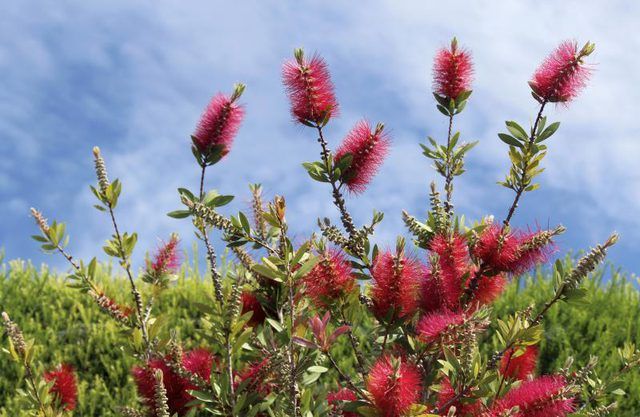Bulbs
Flower Basics
Flower Beds & Specialty Gardens
Flower Garden
Garden Furniture
Garden Gnomes
Garden Seeds
Garden Sheds
Garden Statues
Garden Tools & Supplies
Gardening Basics
Green & Organic
Groundcovers & Vines
Growing Annuals
Growing Basil
Growing Beans
Growing Berries
Growing Blueberries
Growing Cactus
Growing Corn
Growing Cotton
Growing Edibles
Growing Flowers
Growing Garlic
Growing Grapes
Growing Grass
Growing Herbs
Growing Jasmine
Growing Mint
Growing Mushrooms
Orchids
Growing Peanuts
Growing Perennials
Growing Plants
Growing Rosemary
Growing Roses
Growing Strawberries
Growing Sunflowers
Growing Thyme
Growing Tomatoes
Growing Tulips
Growing Vegetables
Herb Basics
Herb Garden
Indoor Growing
Landscaping Basics
Landscaping Patios
Landscaping Plants
Landscaping Shrubs
Landscaping Trees
Landscaping Walks & Pathways
Lawn Basics
Lawn Maintenance
Lawn Mowers
Lawn Ornaments
Lawn Planting
Lawn Tools
Outdoor Growing
Overall Landscape Planning
Pests, Weeds & Problems
Plant Basics
Rock Garden
Rose Garden
Shrubs
Soil
Specialty Gardens
Trees
Vegetable Garden
Yard Maintenance
Bottlebrush Tree Facts
Bottlebrush Tree Facts. Native to Australia, bottlebrush trees and shrubs (*Callistemon* spp.) get their name from the flower spikes that form in spring or summer. There are currently 40 species in this genus. Most of these species grow in the east and southeast of Australia. Two species are native to southwest Australia, and four species are found...

Native to Australia, bottlebrush trees and shrubs (Callistemon spp.) get their name from the flower spikes that form in spring or summer. There are currently 40 species in this genus. Most of these species grow in the east and southeast of Australia. Two species are native to southwest Australia, and four species are found in New Caledonia.
Native Habitat
In the wild, bottlebrush thrives in Australia's tropical northern climate and the more temperate south. Temperatures below 20 degrees Fahrenheit will damage the plants. Full sun conditions are best for growing bottlebrush in the garden. Any type of soil will do, as long as the pH is not highly alkaline. Soils with excessive alkalinity result in chlorosis, which causes the plant's leaves to turn yellow.
Bottlebrush naturally grows in wet locations, including areas that are prone to flooding. You can plant them in similarly moist soil in the garden, but they will also grow in well-drained soil. For the first year, water enough to keep the soil moist so plants can develop a deep root system. Once established, most bottlebrush species are very tolerant of dry conditions as well.
Bottlebrush Species
Red bottlebrush (Callistemon citrinus) is widely grown in gardens. It grows 10 to 15 feet tall and wide, and is hardy in U.S. Department of Agriculture plant hardiness zones 9a through 11. The dwarf bottlebrush variety (Callistemon citrinus "Little John") grows only 3 feet tall and 5 feet wide. This variety is hardy in USDA zones 8 through 11.
Another popular species for gardens is the weeping bottlebrush (Callistemon viminalis). It's slightly less hardy than the red bottlebrush, and grows in USDA zones 9b through 11. The flowers are red, and mature trees can reach 25 to 30 feet tall and wide. This variety is not as drought tolerant as other bottlebrushes, and needs enough water to keep the soil consistently moist.
For more variety in flower color, plant white bottlebrush (Callistemon salignus). This tree grows 20 to 25 feet tall, and 10 to 15 feet wide. They are hardy in USDA zones 9 through 11. The showy flowers are usually cream or yellow, but pink varieties are also available.
Flower Colors and Forms
Bottlebrush flowering spikes are made up of clusters of individual flowers. Each flower bears pollen on long filaments, which give the flower spikes their brushlike shape. The filaments, and therefore the flower clusters, are usually shades of yellow or red. These flowers are irresistible to nectar-loving birds, including hummingbirds.
Because bottlebrush hybridize easily, flower color varies widely if you grow the plants from seed. Plants grown from hybrid seeds may have weeping or upright foliage, small or large leaves, and flower colors in a range of tones from white to yellow to red. Sometimes, a single plant has multiple flower colors.
Growing From Seed
After flowering, a hard seed pod forms at the base of each bottlebrush flower. These seed pods are round, dry and brown in color. The seed pod clusters stay on the plant for at least a year before releasing their seeds. In the wild, seed release can be triggered if a fire sweeps through the area where bottlebrush are growing.
It's easy to start new plants from seed. Collect the seed pods and place them in a paper bag, and then store them in a warm location until they open naturally and release the seeds. Choose a container with drainage holes, and fill it with well-drained potting soil. Scatter the seeds over the surface of the soil in spring, after there is no danger of frost, or in the summer; they are not picky about timing. Place the container in a warm location sheltered from wind. Keep the soil moist, and in two to three weeks you'll have sprouting bottlebrush plants.